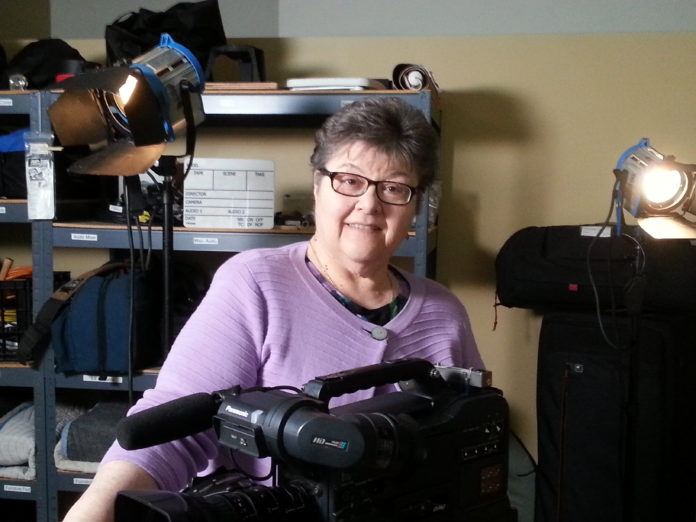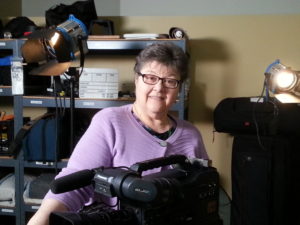
Sister Judy Zielinski’s knees hadn’t felt right for a decade.
But during the past two years, they began intruding on her personal life more than the 66-year-old Sylvania Franciscan sister was willing to simply chalk up to old age.
“I had a couple arthroscopic surgeries, and they gave me some relief but I knew they were a Band-Aid,” Zielinski said. She is currently stationed in South Bend, Indiana, working for a TV production company, a job that requires her to travel frequently from city to city and also from site to site while working on a particular assignment.
“I was struggling to keep up with the crew from point to point,” she said. “Last spring and summer, I knew I had to do something. [The pain] was affecting not only work, but also my personal life.” She found herself putting off simple errands like going to the grocery store because she didn’t want to go through the pain.

She began seeing Dr. Dennis Assenmacher, who operates Assenmacher Orthopaedics with his sons, Drs. Joseph and Craig Assenmacher out of locations at ProMedica Bay Park Hospital and ProMedica Wildwood Orthopaedic and Spine Hospital. She tried Synvisc-One shots, meant to provide up to six months of osteoarthritic pain relief by lubricating knee joints. The injection was successful on her right knee, but largely ineffective in her left knee.
Dennis Assenmacher referred her in October 2014 to his son, Craig Assenmacher. After seeing him, she discovered she had no cartilage remaining between her upper and lower knee bone plates in the left knee, nor was her ACL tendon intact.
“He wasn’t sure how I was working,” Zielinski said.
Although her left knee was in far worse shape than the right, Craig Assenmacher told her both knees would be candidates for joint replacement surgery. The surgeries could be performed three days apart, putting her in the hospital for about one week.
Although it would be her first hospital surgery experience, Zielinski decided to go for it.
“My schedule is very complicated,” she said. “I wanted one-stop shopping. I wanted to do rehab for both at the same time.”
Dr. Craig Assenmacher
She had the complete knee replacement surgeries Jan. 27 and 30 at ProMedica Bay Park Hospital.
Assenmacher, who also performs hip-replacement surgeries, said Zielinski’s understanding of the procedure and her willingness to get back a part of her life she had lost made her an ideal candidate for joint replacement surgery.
“The main reason we do joint replacement is to try to keep them active and even improve their ability to maintain an active lifestyle,” he said.
“Usually by the time patients have come to me, they have tried injections, steroids, lifestyle modifications such as weight loss, braces, cane, walker and physical therapy,” Assenmacher said. He said he advocates patients trying a number of nonoperative measures before considering joint replacement surgery.
Obesity is often the single largest factor in the need for joint replacement operations, he said.
“Most of our epidemic in this region is larger patients,” he said. “It’s a simple biomechanical thing — [more weight, more wear]. … “My whole thing is always ‘intake/output.’ Count your calories. Try to burn more than you take in, but that’s not easy for a lot of people.”
Unfortunately, for those carrying extra weight and suffering from arthritis, exercise is not easy.
“If someone comes in and they have horrible arthritis and they’re a larger patient, it’s highly unlikely they’re going to lose weight,” Assenmacher said.
He prefers to perform surgery on patients with a body mass index of 40 or below.
While the target range of joint replacement patients is in patients 50 to 70 years of age, Assenmacher has performed one on an 87-year-old woman.
“Most patients say they wish they would have done it earlier,” he said of those on the upper reaches of that age range. Most knee replacements will last 20-25 years, depending on how active the patient is. Innovations with the plastic used in the knees are extending that timeframe, he said.
Zielinski is pleased she opted for the surgeries when she did.
“Recovery has been so smooth and almost seamless,” she said seven weeks after the surgeries. “I’m delighted I did it and delighted I did both at once. It was not easy to spend five days in the hospital. Now that it’s done, I’m very, very happy I don’t have to go back.”
One month after surgery, she was walking around without assistance. After five weeks, she was back to work.
“I’m very aware I don’t have any of the arthritic pain in my right knee,” she said. “Not that I’m completely pain-free — I can feel [soreness] when I get up in morning.” She is able to manage the pain with Tylenol.
Zielinski is not shy about crediting her doctor for any success she’s experienced with her new knees.
“I’m really very pleased with the experience,” she said. “I just feel he’s an extremely competent, reflective surgeon.”
Assenmacher’s goal is for his patients to make the decision that is best for them and their life.
“I usually give them the pros and cons, and the percentages of what the risks are with surgery and say ‘You have to make an informed decision,’” he said.
“The patient should feel comfortable with their surgeon and be able to discuss what they want.”






















